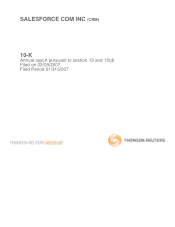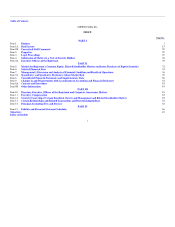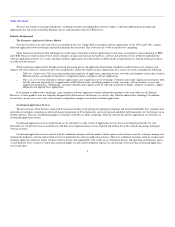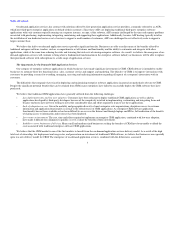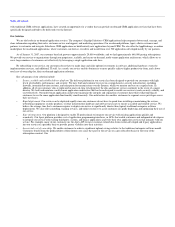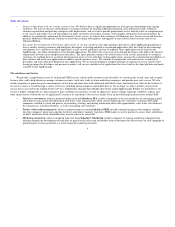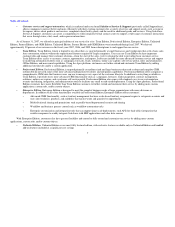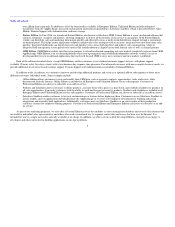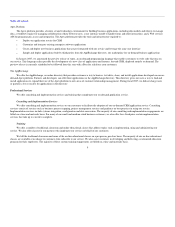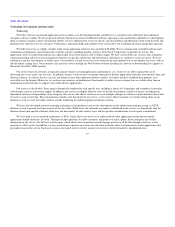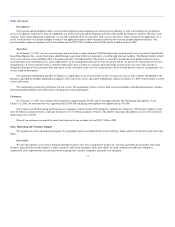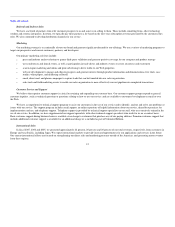Salesforce.com 2006 Annual Report Download - page 5
Download and view the complete annual report
Please find page 5 of the 2006 Salesforce.com annual report below. You can navigate through the pages in the report by either clicking on the pages listed below, or by using the keyword search tool below to find specific information within the annual report.
Table of Contents
We have also begun to encourage third parties, including customers and independent software vendors, to develop additional functionality and
applications that run on our technology platform, but are sold separately from our CRM service.
Industry Background
The Enterprise Application Software Market
Over the last thirty years, there have been several shifts in the way vendors deliver enterprise software applications. In the 1970s and 1980s, vendors
delivered application software through centralized mainframe based systems. This evolved in the 1990s to client/server computing.
Many businesses purchased, built and deployed a wide range of enterprise software applications in such areas as enterprise resource planning, or ERP,
and CRM. Businesses had no choice but to install, configure, manage and maintain the hardware, software and network services needed to implement the
software application in-house. As a result, enterprise software applications were historically available mostly to large businesses with the financial resources
to make such investments.
While technology improvements brought increased processing power and application functionality intended to enable businesses to automate and
improve their basic processes, businesses have been challenged to realize the benefits of these applications for a variety of reasons, including the following:
• Difficulty of deployment. The increasing number and complexity of applications, operating systems, networks and computer systems have made it
difficult and time consuming for businesses to implement and use enterprise software applications.
• High cost of ownership. Enterprise software applications carry a high total cost of ownership. Customers must make significant investments, both
initially and on an ongoing basis, in applications and IT infrastructure, including computer systems, networks, software licenses, service and
support and maintenance. Additionally, customers typically must employ costly IT staff and consultants to deploy, integrate, customize, support,
administer and upgrade these applications.
In an attempt to address these challenges, many enterprise software application vendors adapted their products to be accessible over the Internet.
However, as these products were not originally designed to be delivered over the Internet as a service, they failed to address these challenges. In addition,
because they are not easy to use, users were hesitant to adopt these complex, non-intuitive installed applications.
On-Demand Application Services
The pervasiveness of the Internet, along with the dramatic declines in the pricing of computing technology and network bandwidth, have enabled a new
generation of enterprise computing in which substantial components of IT infrastructure can be provisioned and delivered dynamically over the Internet on an
outsourced basis. This new computing paradigm is sometimes referred to as utility computing, while the outsourced software applications are referred to as
on-demand application services.
On-demand application services enable businesses to subscribe to a wide variety of application services that are developed specifically for, and
delivered over, the Internet on an as-needed basis with little or no implementation services required and without the need to install and manage third-party
software in-house.
On-demand application services contrast with the traditional enterprise software model, which requires each customer to install, configure, manage and
maintain the hardware, software and network services to implement the software application in-house. Moreover, traditional enterprise software vendors must
maintain support for numerous legacy versions of their software and compatibility with a wide array of hardware devices and operating environments, and as
a result dedicate fewer resources to innovation and incur higher research and development expenses as a percentage of revenue than on-demand application
service providers.
2

